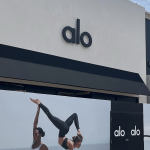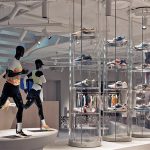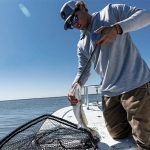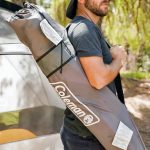Consumer spending for athletic footwear during the first six months of 2004 rose 5% over spending during the same period in 2003, according to research by The NPD Group. Spending during the first half was $7.73 billion in 2004, compared to $7.36 billion in 2003.
SportsScanINFO echoes this result, where the research showed a 2% increase in athletic footwear purchases in the first half. According to SSI, athletic specialty showed a 2% increase, full line sporting goods a 2% decrease, and a low teens increase in the value channel, likely driven by the JFF liquidation. Based on analyst conference calls and a number of conversations, nearly every retailer has reported strong athletic sales, even as the brown shoe, licensed apparel, and other sporting goods categories have struggled.
Fortunately, we havent found any sporting goods retailer that had athletic footwear results declining from last year.
Based on the NPD data, SGMA International said that the industry in 2004 also benefited from reduced emphasis on heavy price-cutting by retailers, a continuation of a trend that began in the second half of 2003. Their report said the average price of a pair of athletic shoes declined 1.7% during the first six months of 2004 to $35.47. NPD said the average price of a pair of mens shoes fell 3.2% to $44.03, while the average price of womens shoes increased 2.1% to $35.22 and childrens shoes rose 3.2% to $23.09.
SportScanINFO reported a 0.6% decline in average prices, with an average of $40.56. Full line ASP ($41.33) was down 3%, the mall ($43.83) up 2% and the value channel ($36.46) down 2%. Both Footlocker and The Finish Line have reported increased average selling prices, in what has been termed “a less promotional environment”.
NPD said that consumers purchased 218 million pairs of athletic shoes during the first six months of 2004, up 6.9%. SSI showed units rose 2%, up 1% in full line, flat at the mall and up double-digits in the value channel.
The SportScanINFO data Performance Running shoes with the largest share at 25% 25% of athletic footwear sales, or up 1% against last year. “Lifestyle Athletic” shoes (23% share and up 32%) was next led by the Nike Air Force One.
Performance Basketball was next at 16% share and but dropped more than 10% against last year. Retailers have all cited the growing strength of running and the continued dominance of classic footwear styles.
According to NPD, Running remained the most popular footwear style, capturing 29% of the market in non-discount stores. Sales of Running styles at athletic footwear chains, sporting goods, and department stores and national chains such as Sears and Penneys rose 7.6% during the period. Basketball styles, which held 23% of the market, grew only 1% at these stores. “Low performance” styles dramatically out-performed the market, attracting a 55% increase in spending in these channels.
In our conversations with retailers, it is apparent that the Back-to-School season was also later than ever this year, both due to the later start to the school year for many kids as well as the ongoing trend of kids to wait until after school has started to make their buying decisions. The data from SSI confirms this phenomenon.
Sales for July were flat to last year, down low-singles in August and up high-singles for the first three weeks of September. The September surge was driven by Classic footwear, up more than a third, and running up in the high-singles. Basketball, which had been horrible for spring, had a good couple of weeks. Sales in Basketball were driven by launch product in the case of Nike and price-point and promotions styles in the cases of all the other vendors. No one we talk to feels we are in a good Basketball period right now.
Anecdotally, retailers continue to cite Running and Classics as the key drivers for the second half. Classic are being driven by true classics such as Air Force One, Reebok Classics, the K-Swiss Classic, and Chuck Taylors, which put up some monster numbers for the BTS period.
Given this emphasis for the holiday season, which vendors will benefit the most? In running, with the fashion spinner solidly on “conspicuous technology”, Nike is the clear winner with strong results from Shox, Impax and Miler. Asics has also had a great first half with sales increases in the double-digits and should be able to maintain that momentum until the end of the year.
Bookings are up here significantly. Saucony, with its emphasis on mid-priced footwear, has not had a strong year so far based on retail results and does not appear to have much on the horizon to advance the numbers in the second half. New Balance, which appears to have become a Kohls house brand, is still trailing last years numbers.
Reebok has posted some strong increases, but all off of a very small base. Reports are that the smaller niche brands like Brooks continue to perform very well.
With all this energy in Running, and Basketball losing momentum this year, we find it interestingly that adidas has focused so much of their marketing spend in the Basketball category. They continue to invest heavily in NBA athletes, while Nike and Reebok have, for the most part, sat on their hands when it comes to the current NBA rookie class.
The strength of Classic will benefit K-Swiss (albeit not at Foot Locker), Reebok, Nike and Converse. Sales of the New Balance 574 are robust, but the average price has been seriously depressed by the constant promoting at the mall.
It is clear that we are in serious athletic cycle right now, at least in comparison to other categories of footwear. We can expect strong result in athletics right through the end of the year.















